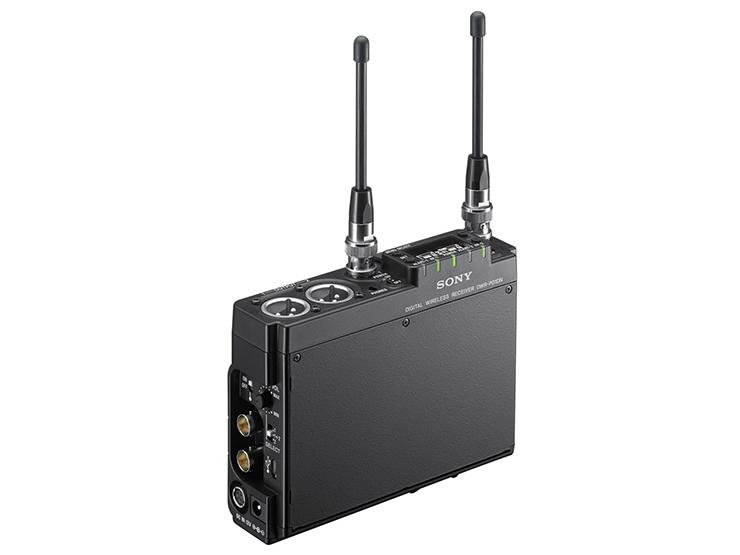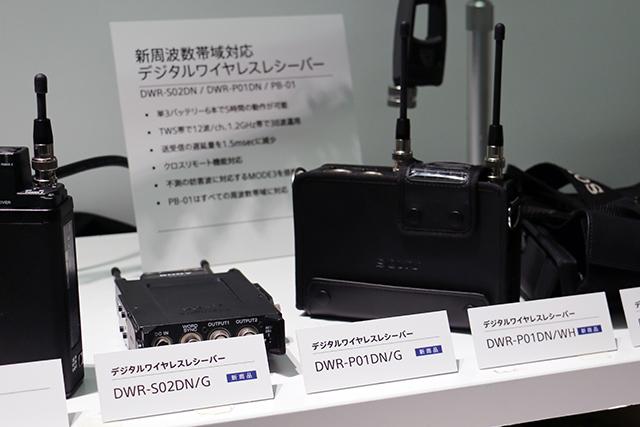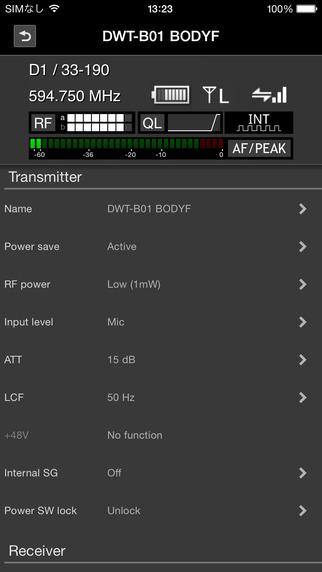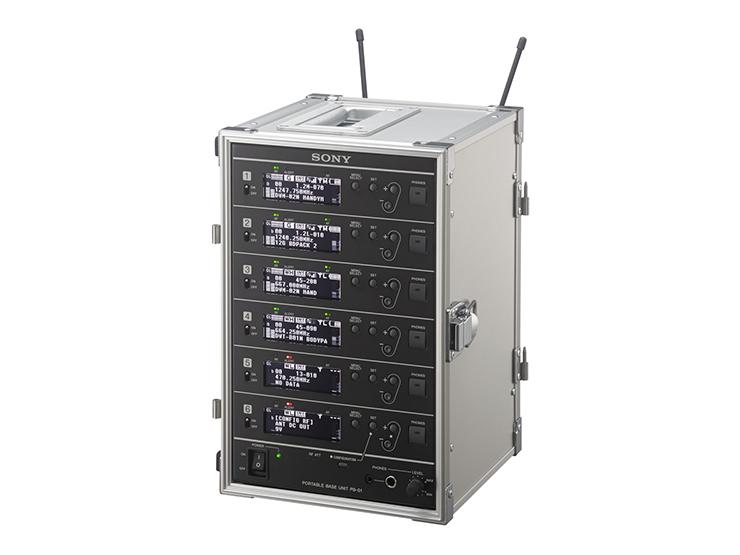-
Posts
166 -
Joined
-
Last visited
-
Days Won
2
Content Type
Forums
Gallery
Store
Everything posted by Michael Capulli
-

653-663 Duplex Gap usable in Chicago?
Michael Capulli replied to Philip Perkins's topic in Equipment
I was successfully running my IFBs in this band last year when I was there. I have a UM400A in BL25 and Its been at 658.300. I also have two other programmed channels in my IFBlues at 652.700 and 664.500. What I did was drive around the city to different areas with an RF Explorer in Peak Hold and I felt that between these 3 channels I would be ok. I ran some tests at cell tower sites in the area that I knew of and did some walk tests. I'll say that the guard band is not clearly defined when you look at scans. My notes say roughly 648-656. But I was getting great range just off the UM400A with a whip. I'm not sure how many channels you can run however, I wouldn't think more than 2 would work. -

Hiding Lavs vs exposed for non-fiction. Opinions?
Michael Capulli replied to Dan Brockett's topic in Equipment
For sit-down interviews in overhead-friendly conditions, I will fuss about also wiring the subject for no reason other than they want both. It's another mic that you need to monitor, adjust, and the odds are higher for interrupting to make those adjustments - all for something that will never be as good as the overhead and you have no intention of using. You are also giving them the option to change it or worse - leave it with the original split track which I have heard too many times. If the subject is not talent you also have the wiring process more challenging to deal with. -
from the PDF- https://assets.sennheiser.com/global-downloads/file/11061/MKH-Story_WhitePaper_en.pdf “How does RF microphone technology work? The principle is simple: Sound waves deflect the diaphragm of the condenser capsule and change the capacitance between the diaphragm and the nearby back electrode (backplate). Contrary to the more common low frequency (AF condenser) method, the capacitance variations are not converted directly into audio signals but modulate a high-frequency (radio-frequency) signal generated by an oscillator inside the microphone. This signal is then immediately demodulated inside the microphone, thus recreating the audio signal but with a very low source impedance that is well-suited for driving a transistor amplifier. Thus an RF condenser microphone is basically comprised of a transmitter and receiver that are directly wired together. The RF signal is therefore kept inside the microphone; only the audio signal is supplied to its output, just like all other microphones”
-
tough one - it’s not worth all the effort sometimes - even if you could pull it off... you have to babysit the rig the entire time and how much of it are you really using? The margins get really narrow here - how much do you push it? How hard will it be to ditch if seen? Is the mic placement even going to be clean to make it worth dealing with hiding the TX?
-
Is the way the DSQD emulates the 'legacy' modes similar to the way the M2R emulates the 'legacy' FM IFB mode?
-
when I encountered issues with CMIT and humidity - it was when the mics were out on an overnight shoot and the temp was dropping and we reached the dew point. You could see dew on the pelican cases. The CMIT was not putting out any audio. It may have needed a day or two to dry out. having a few MKH options would be very wise as the design of these mics are completely different if interested look up 'an MKH story' PDF. On the other hand your MKH mics may go berserk in the presence of a cell repeater or hotspot as they are RF oscillating microphones. So both have their sensitivities but you can go back and forth when you run into problems with one or the other....
-
First thing that came to mind - quarter watt transmitter 10 feet from an SRB receiver - you probably are overloading the receiver. When i've experienced this with the SR receivers it sounds like IMD. Make sure if you are using the SRB that you are properly spacing your frequencies. You have to check the literature - there is a certain way you need to set them up
-
The headphone amp is very good they can drive some inefficient IEMs and phones so Line Level should be no problem - if you are going into the TX in AES then there is no level adjustment on the TX from what I remember. You must check the mixer / limiter settings on the RX because those are more for IFB functions i would leave off for a camera hop.
-
after using 25s for years I recently upgraded to 26 because the plug was driving me nuts - slightly heavier but the same sound signature - much better isolation - built in limiter - well worth it!
-
I’ll add to this and say that the VDB poles have a treatment on the end of each section that provides grip to the inside of the adjacent section. As the cable brings dirt up into the pole this part loses its effectiveness and I think this can be a cause of creaking when rotating the pole while extended. I’ve had a lot of use with the six section VDB (before QT) and if I ever had to get rid of a creak I would just use less of the top sections and more of the bottom sections to even it out. I’ve been using a new QT for two years now and I keep the cable as clean as I can - I don’t use it in filthy locations or put a rycote on it - and it has not started creaking yet. The new poles are amazing and I’m happy they left the length the same on the XL. They have updated the carbon fiber it is more rigid and only slightly heavier than the last one. Also the cam lock QT collars are really really good.
-
If you don’t put the first two sections out 100% it won’t creak. Add some to the third section to even out the weight distribution.
-

Worth it to keep CMIT5u once I have superCMIT?
Michael Capulli replied to Phantompwr's topic in Equipment
How about the fact that you cannot plug in the super cmit into a regular 3pin xlr mic cable and plug that into most common mixers. You will be limited to the 5 pins, breakout box or a device with the AES input -
This is the rig that I want. X3 and Lectro octopack
-
id just have my vendor change out the windscreen for a new one it's cheap
-
This makes sense. The 'u' and 'v' programmable presets are very valuable for me
-

Zaxcom and AudioLTD digital wireless - the future
Michael Capulli replied to RadoStefanov's topic in Equipment
I suspect that one issue with such a narrowband signal is that all other offending signals will be much wider and can wipe out more of our mics if they are tightly spaced -
Smart tune doesn't really make sense for a single receiver?
-
Yes! Was waiting for this! Thanks
-
I love my VDB XL I would jump on one of these
-
With ties I do a joes "doughnut" right at the tip of the mic and if it's a loose tie, need to get crafty with selecting a side to enter the knot on, and using little Joe balls as keepers to tuck the wire in place.
- 21 replies
-
- hiding mics
- micing
-
(and 3 more)
Tagged with:
-
http://www.audiomediainternational.com/show-news/ibc-sony-shows-new-digital-wireless-microphone-system/04784 looks like Sony has upgraded their DWX wireless - N for Network? Now 3 codec modes, Mode 1 for compatibility with original systems, Mode 2 which is higher audio fidelity and lower latency, and mode 3 which is extended range and error-correction. Not sure about the portable receivers but the rack receiver is wideband from 470-700. When you use a wifi router you can now view all of your dwx devices either transmitters or receivers and control parameters from an iOS or android App. On the english Sony website it shows updated rack receiver, handheld microphone transmitter and body pack transmitters only. There doesn't look to be an updated plug-on transmitter or slot receiver yet - however I found on google some images of a new portable receiver unit DWR-P01DN which looks to be basically the slot receiver permanently installed into the adapter (DWA-F01D). In this other (assuming IBC) showroom image there appears to be an updated slot-style receiver unit DWR-S02DN - however can't find any information on this. The iOS App... https://itunes.apple.com/us/app/wireless-studio-mobile/id931773010?mt=8 Looks quite interesting if you read the details of the app - "You can make settings or changes to the following: names of receivers and the paired transmitters, power save, RF power, input level, attenuator, low cut filter, +48V power supply, internal signal, power switch lock, analog output level, antenna attenuator, antenna DC power supply, sync source, and delay adjustment. You can enable/disable the control function by Read-only mode setting." I attached some images of the app too.. - trying to gather the facts, not sure if you can use the network / app stuff without a rack receiver - am I wrong? do anyone else have any information on this new stuff? oh and this thing - half rack receivers?
-

Why Talent Should Never Take the Lavs Off
Michael Capulli replied to Marc Wielage's topic in The Daily Journal
Amazing -
Played around with the LR, doesn't look like there is any tuning group modes or custom 'u', 'v' modes ala 411, SR to make for easier & faster re-tuning of coordinated frequencies 😩😩
-
worth noting - from my experience the older SMs and SMDa - NIMHs won't fit! so if lithoums, 6hr on the SMs and 12 or so on the SMD
-
Are there cups for these batts for distribution systems? I don't think there are power output jacks on the X3...







